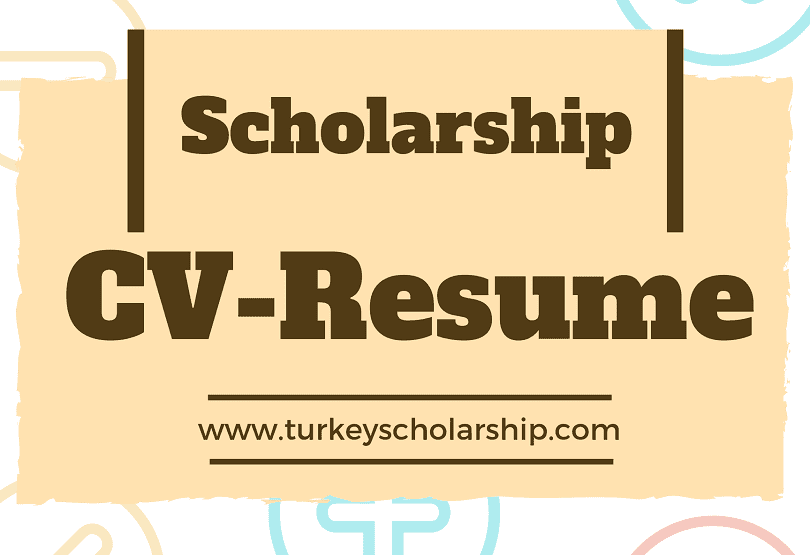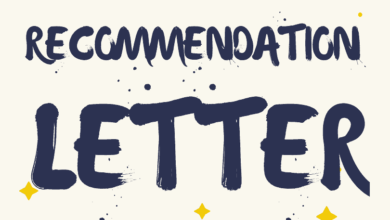Online CV Writing for Scholarship Application Submissions: CV VS Resume
How to write a good CV and Resume for Scholarship awards

Getting a fully-funded scholarship is very hard and competitive. Hundreds and thousands of students apply for the scholarship awards each year. Therefore, applicants should make sure their resume or CV stands out among the others.
Creating a resume and writing a CV are both self-marketing tactics that serve the same aim of presenting an applicant’s experience, qualities, and education information as well as professional representation.
Some scholarship providers will ask for a resume when applying for a scholarship that details an applicant’s personal accomplishments, therefore a well-written and relevant CV can help you a lot in getting a good scholarship.
A student can make a meaningful resume by being organized, truthful, and persistent. The length, purpose, format, and content of a resume and a CV vary significantly. Resumes are usually one to two pages long, although CVs can be any length but are usually between three to ten pages long.
Curriculum Vitae (CV) and its Requirements:
For an academic purpose, a CV is a document that is commonly used instead of a resume. A well-written CV for a scholarship will often include the following elements: a cover statement, academic background, publications information, research experiences, teaching experience, awards, and honors.
It grows into a detailed and extensive declaration covering one’s professional qualifications and activities over time. You may quickly produce a one or two-page, neatly drawn version as well as a complete version for various applications.
To create a decent CV that can earn you a scholarship, you will need exceptional writing skills, extensive research, and a better self-evaluation. You have to provide self-details to the scholarship committee from this document. It is advisable not to brag about anything and be realistic while quoting details in your CV for scholarship application.
A professional looking CV should contain the following information:
- Your Name
- Your address including postcode
- Country and state
- Your Date of birth
- Your Gender
- Your Contact Info and Email address
- Your CV should have consistency and a specific goal
- It should include information on the applicant’s academic achievements and qualifications
- It should contain student’s field of study, research experiences, interests, and other important details that could help them obtain a scholarship.
- All the Languages you speak
- Your IT skills
- Any Job, Internships, or any community work that you’ve done in the past
You must make sure to avoid any religious or political comment in your CV. You can be asked about anything related to your CV in the interview so make sure to write credible information and know about everything that you are mentioning.
Be open and honest about your desire to learn and explore and progress. Make sure to mention everything you have achieved in your life, the hardships you faced, and your achievements through those hardships. If you are not a good writer then you should take help from a professional to write you a perfect CV as it’s a significant document which will open great paths for you.
Resume and its requirements:
Resumes are usually one sheet of paper (front and back), short and precise, whereas CVs are thorough and require multiple pages of information to fully express one’s accomplishments in detail.
A scholarship Resume is significantly different from what we usually think of it. A Resume for a scholarship is not the same as a resume for a corporate position. It should not only be interesting and detailed, but it should also be appropriate for the scholarship application. It should cover all the aspects in a precise manner.
A resume has almost the same contents as a CV but differs a bit in terms of context; it is less detailed, short, and precise.
Following are the factors that should be mentioned in a resume:
- Your Name and address, including postcode
- You Phone with your area code
- Contact information via email
- Your Gender
- Three referees are required, but more can be included if they bring value to your scholarship application.
- Your skills
- Areas of interest
- Attach personal statement.
- Date of Birth (considering the precision with which dates are written in your CV)
- Your Country of Origin
- Academics and qualifications
- Your academic achievements and professional experience should be included
- The standard font size of 11 or 12
- When drafting your scholarship resume, be honest, specific, and follow a timeline.


